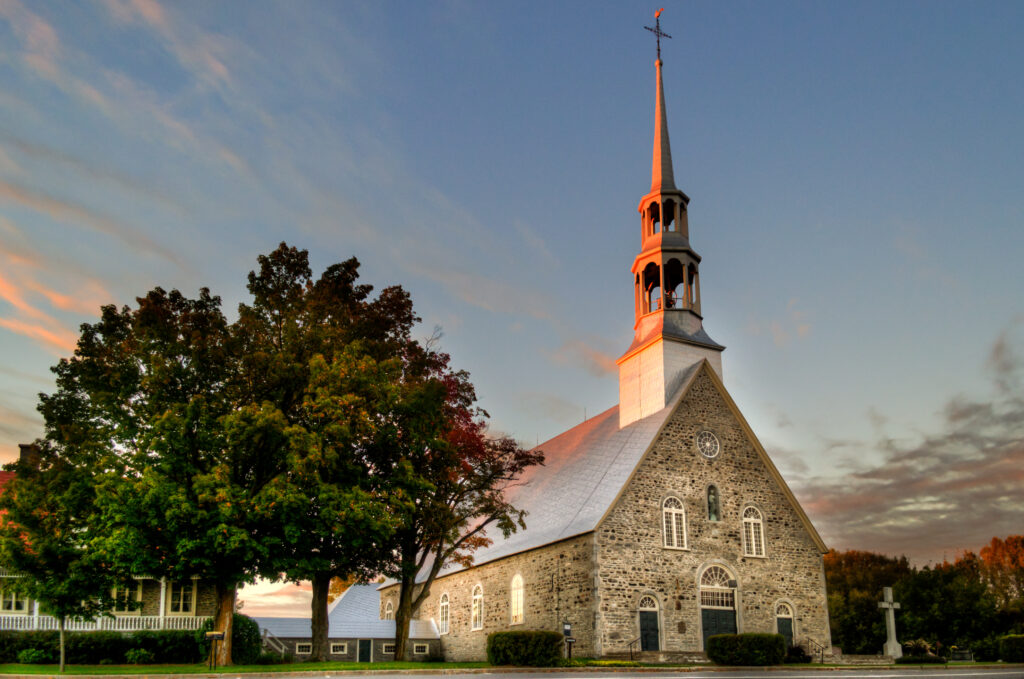As we North American Francophones celebrate National Acadian Day on August 15, I want to celebrate the memory of my 5*ggm, Marie Modeste Doucet, and recall the forced migration from her homeland.
Marie Modeste Doucet was born to Pierre Doucet and Françoise Comeau on 16-Jul-1743 in Annapolis Royal, Acadie in the colony of Nova Scotia. At this time in history, the British had control of this part of modern-day Nova Scotia, officially gained through the Treaty of Utrecht in 1713 which ended Queen Anne’s War between the English and the French. Annapolis Royal was the contemporary name of the former French town of Port Royal, itself the former seat of the French colony.
In spite of the British gaining control of this town and the majority of the Nova Scotia peninsula, the area was still populated in the majority by Catholic Acadians and the native Mi’kmaq. From 1713 up until the last French & Indian War, which ran from 1755 to 1763, the entirety of British colony was under a state of cultural and military confrontation.
The Cruel Necessity
At the outset of the French & Indian War, after the fall of Fort Beausejour, the British military authorities, backed by its civilian counterparts in Halifax and Boston, began the forced deportation of the native Acadians, a people whose roots in the land went back over a hundred years. The plan was simple: evict the Acadians and replace them with people loyal to the Crown.
This operation occurred in two phases. The first phase took place in 1755, right after the fall of Fort Beausejour. The second phase, which expanded the operations to the islands of Île Saint-Jean (modern-day Prince Edward Island) and Île Royale (modern-day Cape Breton Island), took place after the fall of the fortress of Louisbourg on the latter island. In all, over 14,000 Acadians were deported; over 50% perished in the operation through disease, exposure and shipwreck. In their place, Scottish and New England settlers came to Nova Scotia and settled in their homes and farms.
The necessity of this heavy-handedness was debated at the time and caused a crisis of faith in a number of the soldiers who had to carry out the operation. That this forced deportation would lead to the deaths of many of the Acadians was understood by those in situ, if not by the those giving the orders. That it was a crime against humanity is not a point of debate among modern scholars.
Born into Conflict
Between the time of Marie Modeste’s birth in 1743 and the fall of Fort Beausejour in 1755, two more conflicts erupted in Nova Scotia. These were King George’s War, the North American extension of the War for Austrian Succession, which ran from 1744 to 1748, and Father Le Loutre’s War, a guerilla war which ran from 1749 to 1755. While the latter war certainly influenced the decision to deport the native Acadians, involvement by the Acadians in the conflict was by no means extensive.
Marie Modeste’s life was certainly flavored by these conflicts and other tragedies. Her father, Pierre, died some time before her mother’s remarriage to Joseph Brun on 31-Jan-1752.
The rest of the story has been captured on WikiTree:
When Marie-Modeste Doucet was only about 12 years of age, she was deported, with her stepfather, her mother and siblings to the New England Colonies. After the end of the Seven Years’ War in 1763, the Acadians detained in the colonies were finally free to leave. On 1 March 1765, James Murray, Governor of the Province of Québec, issued a proclamation offering free land to new immigrants. Between 1765 and 1775, 1306 Acadians deported to New England immigrated to Quebec.
Her stepfather Joseph was on a list, dated 2 June 1766 in Boston, of French Neutrals wishing to emigrate to Quebec. The family left Newburyport, Massachussetts, in June 1767 aboard the ship Tryal and arrived at the port of Québec on 16 July 1767.
WikiTree Profile of Marie Modeste Doucet
Epilog
On 23-Oct-1769, at the age of 24, Marie Modeste married François Nicolas Lanciault in the church of Saint-Antoine-de-Padoue in the town of Saint-Antoine-sur-Richelieu. He was a French immigrant from Noyon and 20 years her senior. Marie Modeste would be his second wife and of the same age as his two surviving children. Together, the couple would settle in the town of L’Acadie, a town incorporated and settled by survivors of the Acadian expulsion who made it to Québec.
Marie Modeste would give birth to two children: André and Marie Monique, my 4*ggm.
On 16-Aug-1796, after close to 27 years of marriage, François passed away at the age of 72. Marie Modeste would marry François Lanoue in L’Acadie approximately a year and a half later.
On 19-Aug-1831, Marie Modeste would pass away at the age of 88 in L’Acadie. She was buried two days later in the parish cemetery of Sainte Marguerite de Blairfindie.

Je me souviens.
